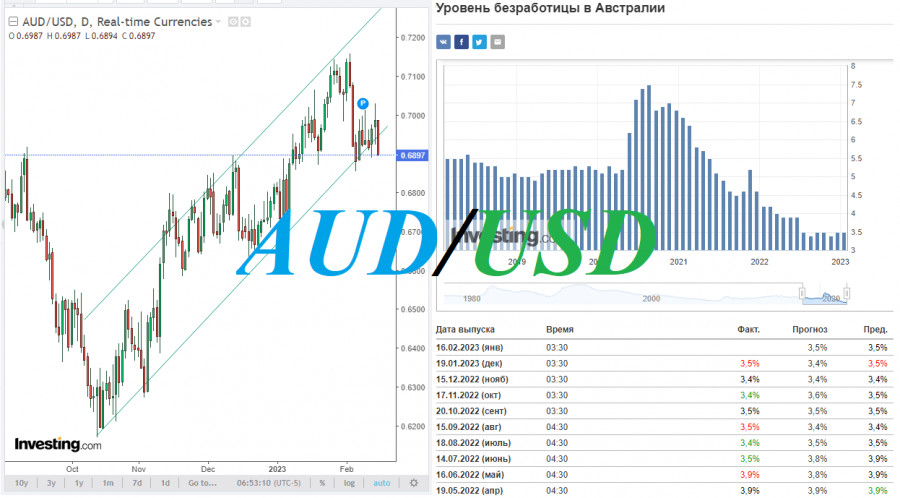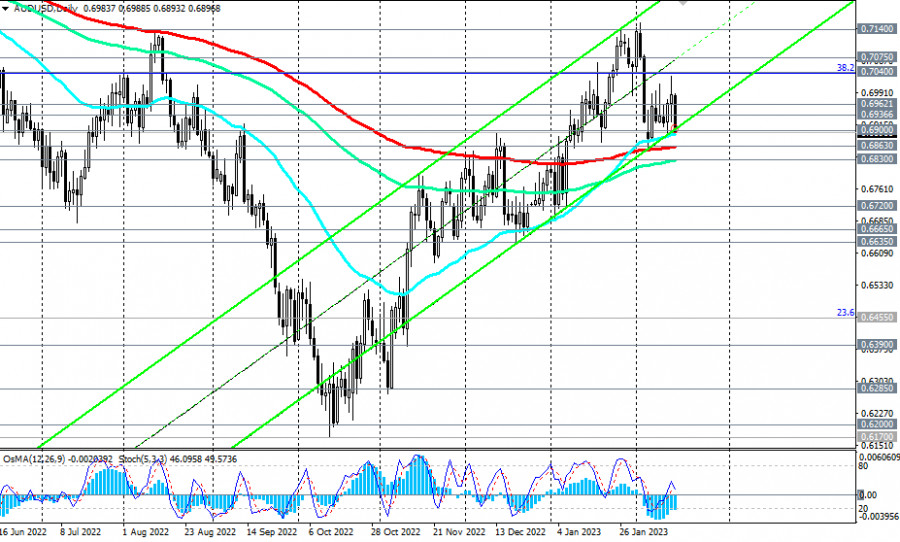
The state of the labor market comes to the fore when determining the parameters of the central bank's monetary policy. In this regard, tomorrow, market participants will analyze the weekly report of the U.S. Department of Labor at 13:30 (GMT). A relative increase in jobless claims is expected, which is a negative factor for the dollar. Data better than the forecast will have a positive impact on it.

Also, tomorrow, at the very beginning of the trading day (at 00:30 GMT), the Australian Bureau of Statistics will publish a report on the Australian labor market with data for January. It is also an important leading indicator of consumer spending, which accounts for the bulk of the overall economic activity of the population.
The growth of the indicator has a positive impact on consumer spending, which stimulates economic growth. A high reading is positive for the AUD, while a low reading is negative.
The employment rate of the country is expected to improve (+20,000 employed citizens after falling by -14,600 in December), and the unemployment rate at 3.5%, corresponding to multi-year lows and previous values of the indicator (3.5% in December, 3.4% in November and October, 3.5% in September and August, 3.4% in July, 3.5% in June).
If the values of the indicators from this report turn out to be worse than the forecast, the Australian dollar may fall sharply in the short term. Better-than-expected data will have a positive impact on the AUD.

In the meantime, amid strengthening U.S. dollar, the AUD/USD pair is correcting downward, declining after an increase at the beginning of the week. The Australian dollar was not supported by Reserve Bank of Australia Governor Philip Lowe's statement today that inflation is too high and should be lowered. In his opinion, interest "rates have not yet reached their peak," and "there is a risk that the RBA has not done enough to raise rates."
At the beginning of today's trading day, the price broke through the important support level 0.6962, and with the start of the European trading session, the AUD/USD decline resumed, then the pair headed towards the key support level 0.6863, which separates the medium-term bull market from the bear market. A break of the support at 0.6830 will indicate the return of AUD/USD to the long-term bear market zone.